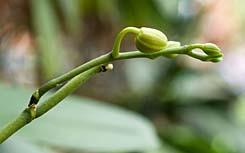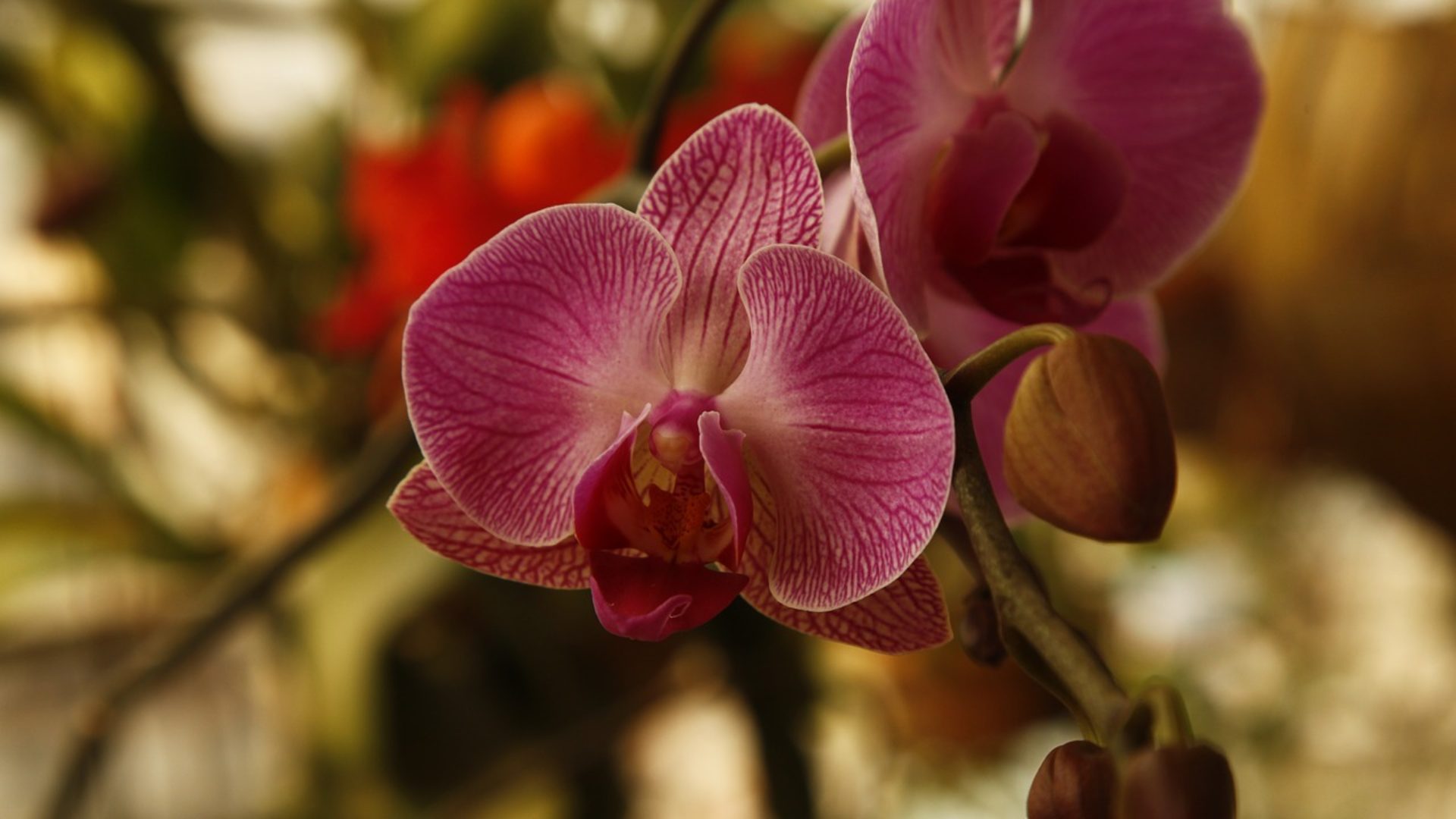So where should I be cutting the spike?

All of the more commonly available orchids, only Phalaenopsis (the moth orchid) will re-bloom from its old spike. Phalaenopsis will usually re-bloom given a little extra care. When the last flower fades, you can leave the spike (stalk) on and it will still continue flowering but the stalk gets very disgraceful and the flowers get smaller. Some people believe it is the best to cut off the stem entirely at the base where it comes out of the leaves, and it will re-bloom in several months. You can also cut off the stalk leaving two nodes (those little brown lines on the stem below where the flowers were) on the stem. One of these nodes will then start and generally produce flowers within eight to 12 weeks. Younger or weaker plants may not rebloom and some Phalaenopsis are genetically incapable of reblooming from the old spike. These are usually nodes that flower with branched spikes. It’s always worth a try. Orchids, like animals, are easily affected to viruses, so whenever cutting an orchid plant always use a completely clean tool to prevent the spread of virus. A straight edged razor blade is a good tool to use for cutting flower spikes.
How do I water orchid?
Avoid overwatering and underwatering, but the later one less likely to occur. Continual wetness will cause the roots to rot, which leaves the plant without any means for taking up nourishment which then causes the leaves to droop and will eventually kill the plant. The classic recommendation is to water the day before the plant become completely dry. If you have to let the plant go dry to find out what a dry plant weighs, it will not kill the plant and will make you a better grower. Another measure is using the pencil trick (the point of a sharpened pencil, when inserted into the medium, will darken with moisture if the plant has sufficeint water). And, there’s always the old standby – put your finger in the mix. If it feels wet, it is wet. If you are unsure whether it is time to water, wait one more day.
The most common water giving advice is to achieve even most levels, but never really explained to the fullest. . Because most plants are grown in plastic containers a good diagnosis is the weight of the plant: heavy – does not need watering; light – does require water. With a little practice, one can easily tell the amount of moisture left in the container.
Water your orchid early in the morning. This makes sure complete water evaporation on the leaves as well as the crown by dusk. If your home is very warm or has low humidity you will most possibly need to water more often. The best place to water your plant is in the kitchen sink. Use tepid water (do not use salt softened or distilled water) and water your plant for about 15 seconds and be sure to thoroughly wet the media. Then let the plant to drain for about 15 minutes. It may seem dry but it has had enough water. After watering, place the pots so that they do not stand in the water. Some people prefer to place the pots on “humidity trays” or in trays or saucers of gravel or pebbles and water. the pot needs to be above the waterline so it doesn’t drown. This helps to ensure that the base of the pot is not put into water, increases humidity for the plant, and provides some air circulation under the pot.


